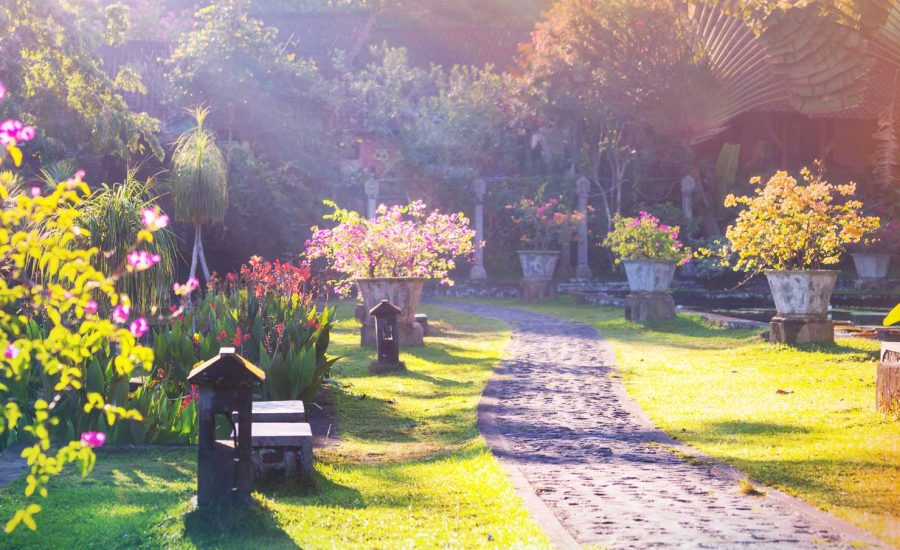
Your yard is an extension of your home, and making it a beautiful, family-friendly place to hang out is a major goal of many homeowners. However, environmentalism is definitely making headway on the home improvement priority list for homeowners … so finding ways to improve that outdoor space without sacrificing the Earth is a definite must. Add to that the priority of cost-effectiveness, and you’ve got quite the tall order!
Today, we’ll talk about 6 ways to make your yard more eco-friendly and more enjoyable to hang out in. Plus, you can save greenbacks while making it greener. It doesn’t get better than that, right?
1. Be Water-Wise
If the experts are to be believed, water will be the great commodity of the 21st century. That makes it crucial to respect this most valuable of resources to the best of our ability. What can you do? Become water-wise. That might mean installing drip hoses in your vegetable garden, or letting your lawn go brown in the summer. You can also plant low-water species like cactuses and succulents, which require much less moisture to thrive.
2. Plant Native Species
Native species are much more likely to do well in your area, which means they will require less water, less fertilizer and less overall tending. Usually this means using less total resources to keep them alive, and adding fewer chemical inputs to groundwater. You can check online or quiz your local garden center to see what’s native to your area.
3. Install Stone Exteriors
While you might associate stone veneers with fireplace stone, it can be used for many different purposes. Putting stone veneer on your home not only gives your home a cheerfully updated look, it also insulates your home. Exterior stone keeps rooms cooler in the summer and warmer in the winter, lowering your bills and reducing your impact on the environment. If you buy the right stone veneer, manufactured in an eco-friendly way, which reduces quarrying and the environmental impact that brings, even better.
4. Use Rainwater
Rainwater is a much more available and replenishable resource than groundwater. Any time you water your yard from the hose, you’re drawing on aquifers that take a long time to refill. Any time you use rainwater, however, you’re leveraging a renewable resource. Install rain barrels under your downspouts to collect water during rain, then use a watering can or a siphon to water your yard with it. Many communities in the Northwest Suburbs are offering FREE rain barrels or reimbursing residents for the purchase of rain barrels.
Libertyville Rain Barrel Reimbursement Program
Arlington Heights FREE Rain Barrel Application
Mount Prospect FREE Rain Barrel Application
Greater Chicago Rain Barrel Program
Know of more rain barrel programs in the Chicagoland area? Post in the comments or on our Facebook page and we’ll be sure to add it to the list!
5. Make Up-cycled Yard Décor
Up-cycling is all the rage. Perhaps you solder cute faces to metal watering cans, plant a water lily garden in an old claw-foot bathtub, or use toy wagons as planters. Using otherwise useless objects instead of buying new items at the store or online is always the green – and frugal! – way to go.
6. Prevent Erosion
The washing away of topsoil due to rain and wind is a serious ecological problem, but halting this problem can start right in your front yard. Plant cover plants that spread across the top of the soil and anchor it in place. If you have room, plant trees with wide-sweeping canopies, which indicates they will have equally wide root systems, which also help keep soil in place. Avoid leaving graded surfaces like hills and embankments bare, because the rain will just wash the soil right off of them.
Greening up your yard is pretty simple, in the end. Next time you’re wondering how to do Planet Earth a solid and make your outdoor living space even better, try one of these tricks and watch the magic happen.
Stay tuned for more eco-friendly ideas for your home & yard and some more great tips on how you can use Stone Veneer in and on your home. And don’t forget to take a look at the first article in our latest eco-friendly series: 5 Environmental Benefits of Exterior Stone Siding

